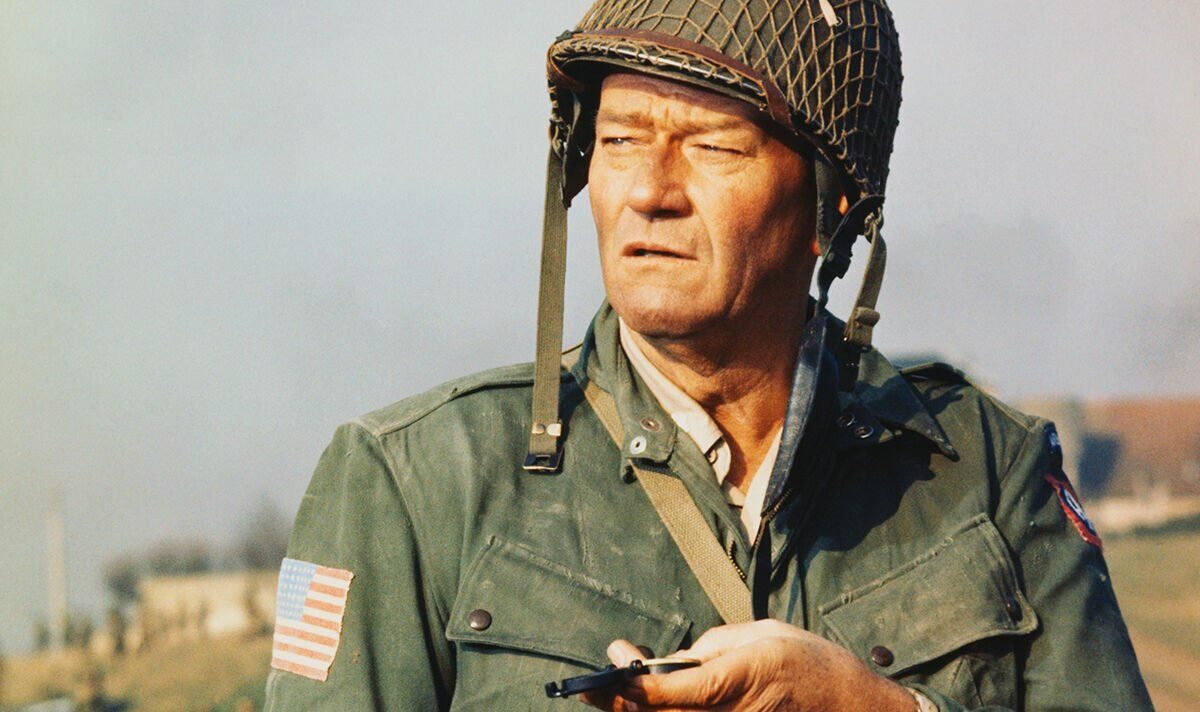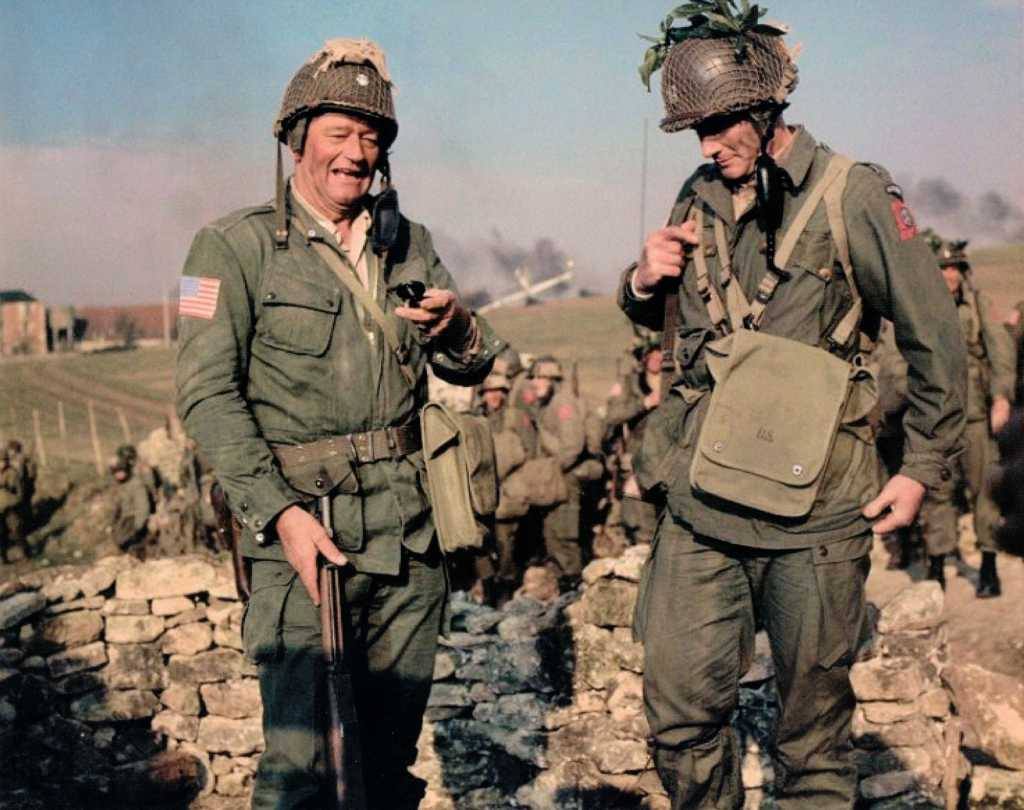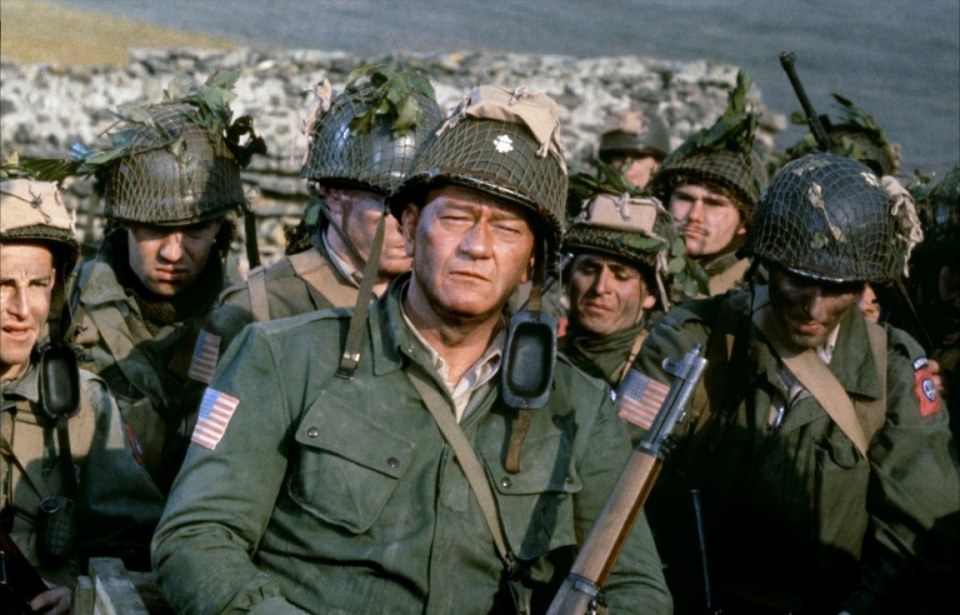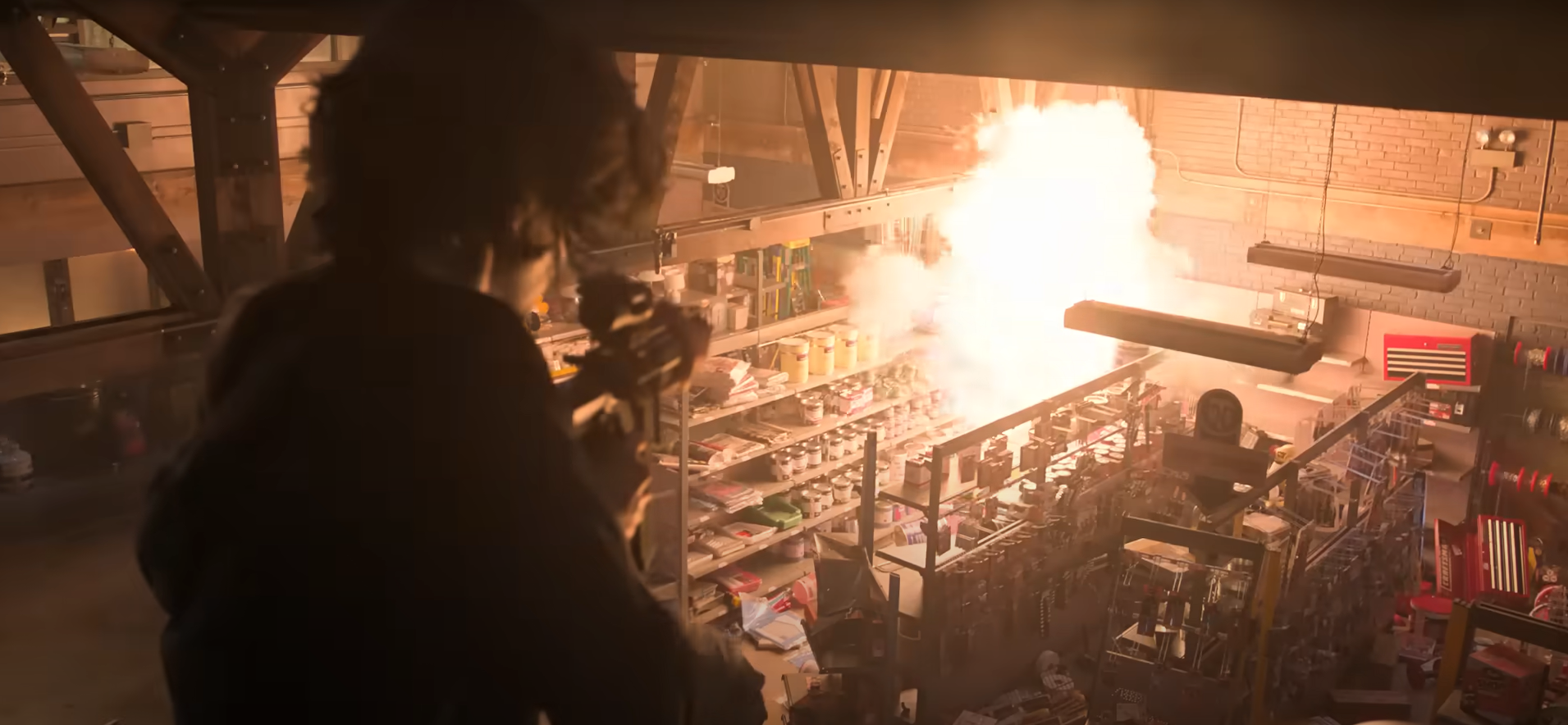Movie:

Characters and Performances
“The Longest Day” boasts an impressive ensemble cast, featuring performances from some of the biggest stars of the era. John Wayne stands out as Lieutenant Colonel Benjamin Vandervoort, bringing his signature gravitas and heroism to the role. Robert Mitchum delivers a memorable performance as General Norman Cota, embodying the grit and determination of the Allied forces. Other notable actors include Henry Fonda as Brigadier General Theodore Roosevelt Jr., Richard Burton as Flight Officer David Campbell, and Sean Connery as Private Flanagan.
The film’s commitment to authenticity is evident in its casting of actors from various countries to represent their respective nationalities, adding to the film’s realistic portrayal of the multinational Allied effort. The German officers are portrayed with a nuanced perspective, avoiding caricature and instead presenting them as competent yet ultimately outmaneuvered by the Allies’ superior strategy and resolve.

Direction and Cinematography
Directed by a trio of directors—Ken Annakin (British and French segments), Andrew Marton (American segments), and Bernhard Wicki (German segments)—the film achieves a remarkable coherence despite its multiple storylines and locations. The directors’ combined efforts result in a gripping, cohesive narrative that captures the complexity and chaos of D-Day.
The black-and-white cinematography by Jean Bourgoin and Walter Wottitz lends a documentary-like feel to the film, enhancing its historical authenticity. The use of actual locations in France where the battles took place adds to the film’s realism, making the audience feel as though they are witnessing the events firsthand.
Historical Accuracy and Impact
“The Longest Day” is lauded for its commitment to historical accuracy, with many scenes closely mirroring real events and firsthand accounts. The film’s attention to detail extends to the portrayal of military equipment, uniforms, and tactics, all of which contribute to an immersive and educational experience. The film’s balanced perspective, showing both Allied and German viewpoints, provides a comprehensive understanding of the complexities of war.
The film’s impact on the war genre is significant, setting a high standard for future war movies. Its large-scale production, epic storytelling, and dedication to historical fidelity influenced subsequent films and solidified its place as a classic in cinematic history.
Conclusion
“The Longest Day” (1962) remains a landmark film in the war genre, offering a powerful and meticulously crafted portrayal of D-Day. Its ensemble cast, expert direction, and unwavering commitment to historical accuracy make it an enduring tribute to the courage and sacrifice of those who participated in one of the most crucial battles of World War II. The film not only entertains but also educates, ensuring that the heroism and significance of D-Day continue to be remembered by future generations.





